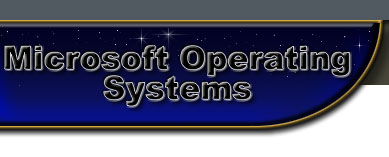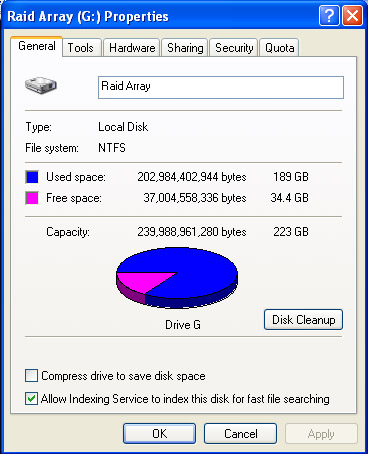
|
Resources References
used in the creation of this site |
Microsoft Windows 2000 Information
*For the sake of availability Windows
XP PROFESSIONAL Screenshots
are shown for most screenshots, however the differances are nominal unless
stated otherwise.
![]() What's
the difference between Windows 2000 Professional, Server, Advanced Server
and Data Center?
What's
the difference between Windows 2000 Professional, Server, Advanced Server
and Data Center?
Windows 2000 is virtually an improved version of NT, building off it's strengths and improving it's weaknesses.
Professional Edition was designed for to replace Windows NT and Windows
95/96 for use on Workstations in corporate environments. It has hundreds
of improvements over NT and supports up to two processors at one time.
Server Edition includes all the features of Professional edition but also includes support for up to 4 processors, Active Directory Support, Internet Authentication services, File, Print and Applications server capabilities.
Advance Server addition includes all the features Server Edition but it supports up to 8 processors, two-way clustering and load balancing, and up to 32 gigabytes of physical memory.
Data Center Limited Edition again includes all the services and features as the Advance Server Edition and more such as; 32-Way Symmetric Multiprocessor Support, Online Transaction Processing, 4-node Failover Clustering and Integrated Hardware and Software Support using the Joint Support Queue.
![]() Windows
2000 professional lacks what main features compared other versions?
Windows
2000 professional lacks what main features compared other versions?
While Professional Edition has many of the same features as the higher versions, it lacks an Active Directory, the ability to Cluster and Load Balance. However, it still does have the ability to support multiple processors (2).
![]() Is
USB, Plug and Play supported?
Is
USB, Plug and Play supported?
One big improvement is the addition of USB & Plug and Play support. Windows 2000 uses the Windows Installer Service to install peripherals without the need to shut down the computer and restart.
![]() Are
maintenance utilities included with Windows 2000?
Are
maintenance utilities included with Windows 2000?
Several maintenance utilities are included with Windows 2000, one you might be familiar with is an Updated Version of Defrag, to improve disk performance.
![]() How
many Dial-Up connections can Professional Edition support?
How
many Dial-Up connections can Professional Edition support?
Professional Edition supports only one, however, Server Edition and higher can handle up to 256.
![]() Should
a hard drive be partitioned using Windows 2000?
Should
a hard drive be partitioned using Windows 2000?
Partitioning is up to the user and depends on several factors. If more then one operating system is installed on one system, for example, Linux, on the same computer, a partition is needed for exclusive use by Windows 2000's file system. If a large hard disk is being used, then a small section can be partitioned for use by Windows 2000's system files for optimum speed. A smaller area to search for files leads to faster search times.
![]() What
file system does Windows 2000 use, is it compatible with Windows 9x?
What
file system does Windows 2000 use, is it compatible with Windows 9x?
Windows 2000 uses the same native file system as NT, NTFS, but it can still use the FAT32 file system introduced by the 9x series. Windows 9x however can only use FAT 32 and FAT 16 from the older versions of Windows 3.x.
![]() Do
I have to be at the designated workstation to install Windows 2000 Professional?
Do
I have to be at the designated workstation to install Windows 2000 Professional?
While most home users install Windows 2000 Professional at the computer, Professional allows an administrator to remotely install the operating system, security patches and applications over the network.
![]() What
methods can I use to install?
What
methods can I use to install?
Of course you can use the CD and insert it into the computer you want to install the OS on, however when you dealing with 500, 10 or even 5 computers, the task becomes time consuming. An alternative would be to create an image of a computer that has the OS on it, and deploy it to each computer, while this is faster then installing the OS from scratch on each system, it requires that every computer Professional is installed on be identical You would install, with the CD, Windows 2000 Professional onto one computer from which you will make a Master Disk Image from. After installing to OS, you use a program such as Norton Ghost to produce an image of the clean install. Depending on the software you use, you normally just insert the Master Disk Image into each computer you want to install on and follow a few prompts.
The fastest way would be to install over the network. Using Setup Manager, you can create a batch file so that the OS can be installed unattended, an example batch file created by Setup Manager is below;
# @rem SetupMgrTag
# @echo off
#
#
# rem
# rem This is a SAMPLE batch script generated by the Setup Manager Wizard.
# rem If this script is moved from the location where it was generated,
it may have to be modified.
# rem
#
# set AnswerFile=.\unattend.txt
# set SetupFiles=D:\i386s
#
# D:\i386s\winnt /s:%SetupFiles% /u:%AnswerFile%
![]() If
there are several logical partitions, what are they considered?
If
there are several logical partitions, what are they considered?
They're all considered part of the Extended Partition.
![]() If I have a hard disk formatted in FAT, can Windows 2000 access it?
If I have a hard disk formatted in FAT, can Windows 2000 access it?
No, only FAT 32 and NTFS.
![]() When
installing, what part of the installation allows me to cusomize my localized
settings?
When
installing, what part of the installation allows me to cusomize my localized
settings?
The Regional Settings Screen.
![]() Can
a system with 32 megabytes of physical memory run Windows 2000?
Can
a system with 32 megabytes of physical memory run Windows 2000?
No, the minimum system requirements states 64 as a minimum.
![]() What
does a "Driver mismatch" indicate?
What
does a "Driver mismatch" indicate?
It means the driver is not compatible with the hard ware it's assigned to.
![]() Will
a system with a Pentium 66Mhz processor run Windows 2000 with minimal
settings?
Will
a system with a Pentium 66Mhz processor run Windows 2000 with minimal
settings?
No, the lowest you can use is a 133Mhz Processor.
![]() Whats
a low end computer capable of running Windows 2000?
Whats
a low end computer capable of running Windows 2000?
A computer with a 1.36 Mhz Processor, 64 Megabytes of Physical memory and a 4 GB hard drive would run Windows 2000 fairly well. The more processor power and memory available to the operating system the better it will run.

![]() I
need to ensure my files are protected, whats the best File Storage System
for this?
I
need to ensure my files are protected, whats the best File Storage System
for this?
NTFS has better security features, including encryption.
![]() ACPI,
whats that?
ACPI,
whats that?
Advanced Configuration and Power Interface is a standard developed by Intel to conserve power consumption, primarily in Laptops.
![]() How
do I know if a system is fully compatible with Windows 2000?
How
do I know if a system is fully compatible with Windows 2000?
Use the Hardware Compatability list, it lets you know if anything will cease functioning under Windows 2000.
![]() I
get an error when installing Windows 200 from the CD, what can be the
cause?
I
get an error when installing Windows 200 from the CD, what can be the
cause?
There can be several causes, the CD is dirty or damaged, the CD drive is faulting or you might not have enough free space.
![]() How
much space do I need?
How
much space do I need?
A 2 Gigabyte hard disk with atleast 650 Megabytes free. However, more space is generally required by companies, and may use RAID configurations.
The basics of a raid array is more then one hard disk can be combined to create either a larger faster virtual drive ( two drives working as one ) or combined where data is saved twice on two seperate drives for file security. Striping and mirroring. Below are two 120GB drives combined into a RAID (0) array.

![]() If
I'd like to create a Domain or a Workgroup, when would I decide that?
If
I'd like to create a Domain or a Workgroup, when would I decide that?
During the installation process, when it prompts you for network settings.
| This site was designed using Adobe Photoshop 7.0 and Dreamweaver 3 by Alex Trigueros for an ITT Tech Class on Microsoft Windows Operating Systems- Any Questions can be sent to GkDragon (AT) NetScape.Com |